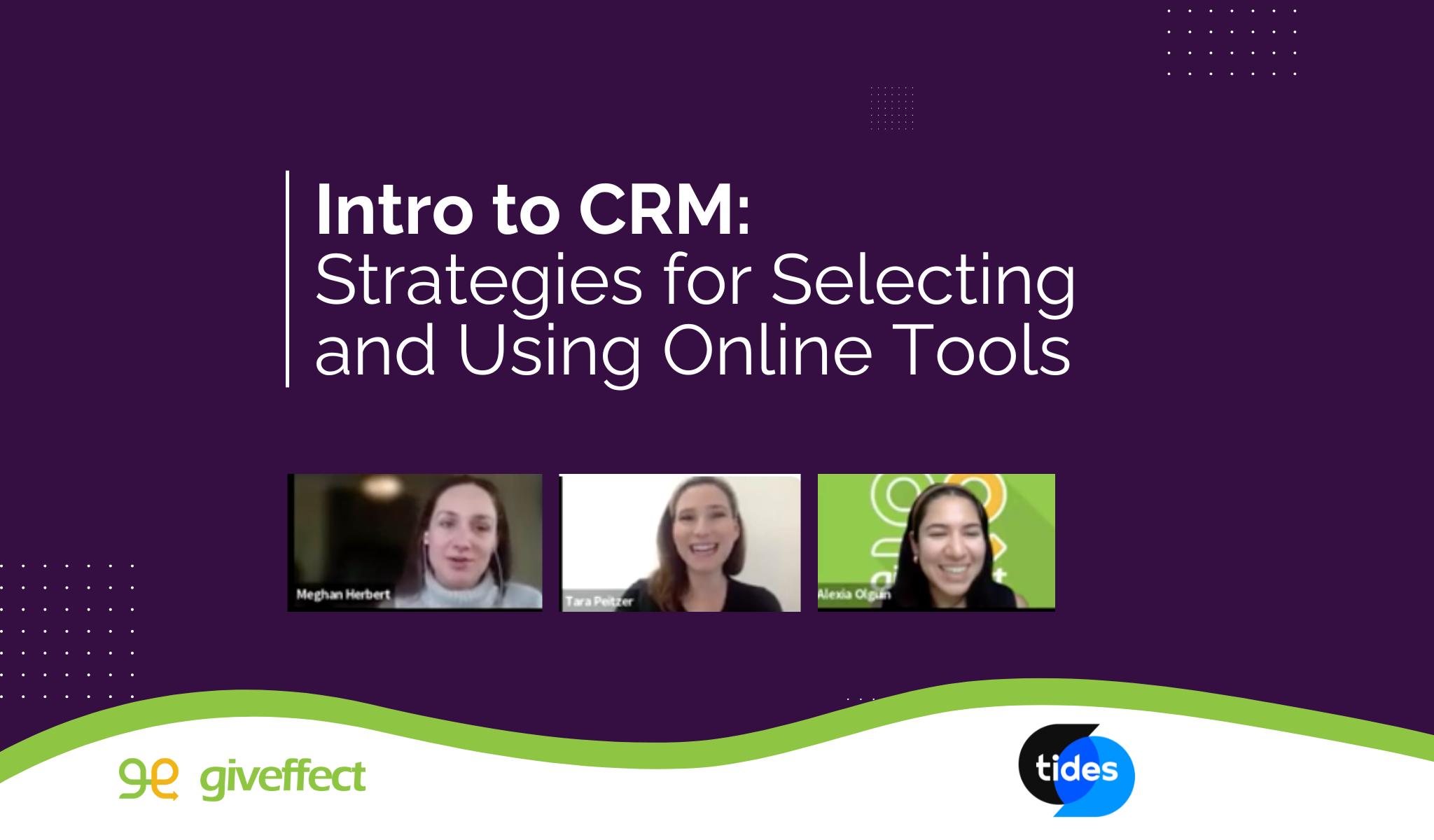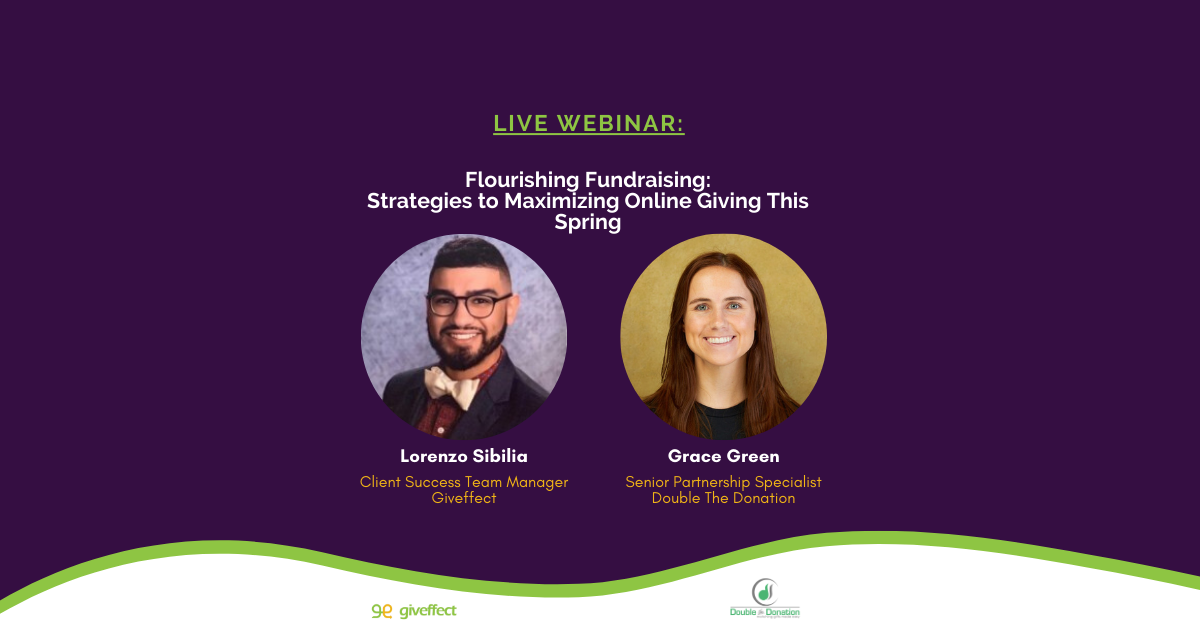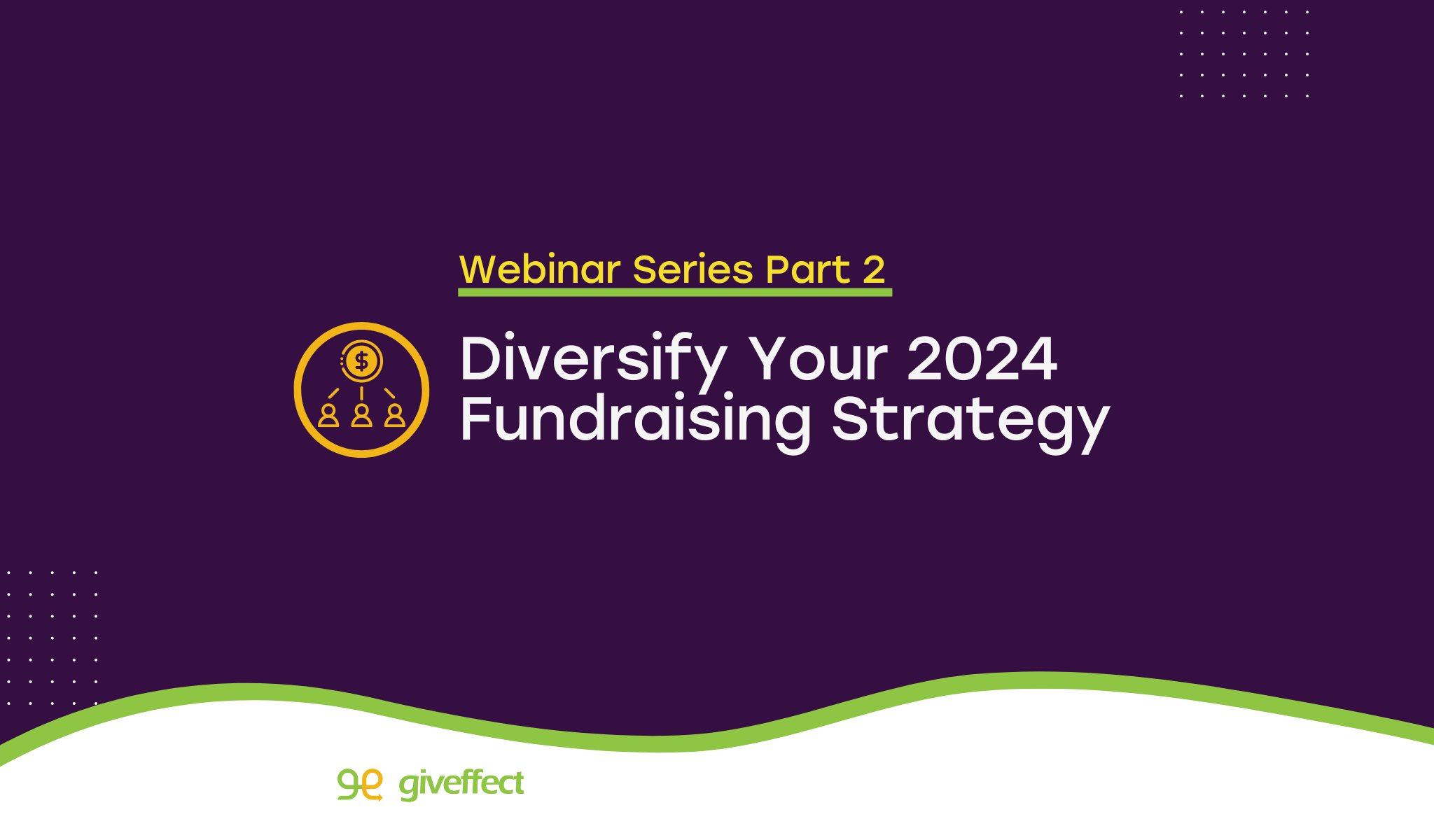In the dynamic landscape of nonprofit fundraising, diversification and innovation are key to achieving sustainable success. Enter the world of fundraising major gifts with non-cash assets, a strategy that’s gaining momentum for its transformative impact.
Beyond traditional cash donations, non-cash contributions, such as stocks, DAFs, crypto, and property, offer a multitude of benefits that go beyond financial value. By embracing this approach, nonprofits can engage donors on a deeper level and strategically align philanthropy with donors’ interests.
In this webinar on the transformative power of non-cash assets in driving major gifts and advancing your nonprofit’s mission, we teamed up with our partner, The Giving Block, to delve into the untapped potential of non-cash assets and unveil the incredible benefits they bring to your organization.
By expanding your fundraising strategies beyond traditional cash donations, you’ll unlock a world of possibilities and revolutionize your major gift acquisition. Jack Harrison, Giveffect Customer Success Team Manager, and Carly Evans, The Giving Block’s Senior Nonprofit Partnerships Manager, uncover:
- What are major gifts and why do they matter?
- Strategies for fundraising major gifts
- Leveraging non-cash assets to diversify your revenue streams and enhance financial stability
Highlights from the webinar:
Why Do Major Gifts and Non-cash Assets Matter?
The State of Philanthropy:
Giving is down 3% according to Giving USA Report and down 10.5% after inflation. The number of total donors is down, though the average gift size is up. Additionally, with 8% inflation, inflation rates are high, and it puts individual giving at risk.
However, diversifying fundraising channels can help mitigate the risk of losing dollars in certain categories. For example, Donor Advised Funds (DAFs) hold an estimated $250 billion in assets, providing a significant opportunity for nonprofits. Different generations have different giving experiences and preferences. It’s important to understand generational differences when it comes to giving. For example, younger donors may not work with wealth and tax advisors as much, requiring nonprofits to make intentional asks to engage them.
Defining Major Gifts
The amount of a donation that is considered a major gift is different depending on the organization. But no matter the amount, cultivating relationships is a big piece in a successful major gifts program.
Building deep relationships with donors can lead to larger contributions; however, it takes time to develop relationships. Building relationships with donors who are able to give major gifts can take anywhere from two months to two years. The time investment it takes to build such a relationship is more than worth it. The impact of relationships is clearly seen in time with the higher average gift sizes suggesting deeper relationships lead to more generous donations.
Where Are Major Gifts Coming From?
Major/mid-level donors have traditionally been much older, and younger generations have given smaller gifts and contributed often in non-monetary ways.
Traditional Online Giving Landscape
The average age of traditional and online donors is 65. In 2021, the average cash donation was $204, with a median gift of $20. However, donors giving non-cash assets can significantly increase their gift size, enhancing tax efficiency and impact. On the other hand, younger donors are becoming major gift prospects due to their increasing involvement with non-cash assets.
Non-Cash Gifts and Gift Size
Non-cash gifts like stocks, crypto, and other assets have much larger average gift sizes compared to cash. When it comes to gift size by payment type, the average past donation in cash was $128, the average stock donations ranged between $5,000 and $10,000, and crypto donations averaged about $6,500. To compare gift size, non-cash gifts can be over 40 times higher in value than traditional cash gifts, providing a substantial opportunity.
Market Size of Non-Cash Assets
The marketing size of non-cash assets is quite large and growing. The crypto market is over $1 trillion, with over 60 million users and around 20% of the US population involved. The total value of the US stock market is over $46 trillion, with significant donations made, showcasing a large potential for nonprofits. Fundraising efforts should target both crypto and stock donors to capitalize on this significant opportunity.
Generational Giving and Non-Cash Assets
Each generation has distinct preferences for asset donations based on their age, education, and income.
- Matures (Silent Generation): A majority of matures prioritize giving in later years through direct mail, Galas, and legacy giving.
- Baby Boomers: Prefer stock donations, making contributions through various methods like direct mail and major gifts.
- Gen X: Half give to charities, with a lower average donation, mostly through stock donations.
- Millennials: Also half give to charities, with a higher average income and crypto and stock donations.
- Gen Z: A portion gives to charities, focusing on crypto and stock donations due to their digital focus and online preferences.
Younger Donors and Non-Cash Assets
There is a correlation between younger donors and non-cash giving. Younger generations, particularly Gen Z and Millennials, show a preference for non-cash assets. Beyond stocks, younger donors prioritize crypto and other assets due to their tech-savvy and digitally engaged nature.
The anticipated wealth transfer of trillions of dollars from Baby Boomers to younger generations presents a major opportunity for nonprofits to engage with these donors and their non-cash assets.
Identifying & Engaging with Major Gift Donors
Nonprofits likely already have major donors within your database. Use CRM platforms to capture preferences, giving history, and other relevant data for segmentation. Then you are able to segment donors by giving potential, giving method, previous giving history, employer information, etc. Segmentation allows for targeted and strategic communication and fundraising efforts.
Collecting and Using Data
Collect data by adding custom questions to online forms and surveys to gather preferences and interests. Sometimes the easiest way to collect the data you need is to simply ask.
Using data mapping. Tag donors based on their giving to specific campaigns for easy identification and strategic communication.
Utilizing workflow automation: Automate donor identification and communication based on their engagement and giving history.
Connecting Donors to Mission
Clearly communicate your nonprofit’s goals and impact to donors to help them understand the importance of their support.
It’s important to know your donor base. Use your CRM platform to understand donor preferences and communication methods to tailor your engagement strategies.
Use consistent storytelling across communication channels. Share impact stories across various channels like email, website, and social media to build emotional connections.
Personalization and Engagement Strategies
For personalized email campaigns, use replacement variables to tailor donation asks based on individual donor giving history. Additionally, personalized checkout pages adjust suggested donation amounts on donation forms based on donor giving history for a more strategic ask. Advertise that your nonprofit accepts various giving methods and educate donors about their benefits.
Be sure to remind donors of important deadlines for different giving methods and benefits for them and your nonprofit. For example, end-of-year tax benefits and capital campaigns closing to create urgency and meet deadlines.
Takeaways
- Importance of tax education: Educate donors about the tax benefits and implications of different giving methods, especially for non-cash assets.
- Segment and strategize: Use data to segment donors and tailor your engagement strategies for maximum impact.
- Prioritize mission connection: Connect donors emotionally to your nonprofit’s mission through consistent storytelling.
- Embrace personalization: Utilize technology to personalize communication and donation asks based on donor history.
- Simplify giving methods: Make it easy for donors to give by offering multiple giving methods and simplifying the donation process.
To learn more about Giveffect and our integration with The Giving Block, schedule your demo today!


